
Tanzania
( 1 user review )Tanzania is the largest country in East Africa, bordered by Kenya and Uganda to the north; Rwanda, Burundi, and the Democratic Republic of the Congo to the west, and Zambia, Malawi, and Mozambique to the south.
Understand
Geography
A large central plateau makes up most of the mainland, at between 900 m and 1800 m. The mountain ranges of the Eastern Arc and the Southern and Northern Highlands cut across the country to form part of the Great Rift Valley.
A land of geographical extremes, Tanzania houses the highest peak (Mount Kilimanjaro), the lowest point (the lake bed of Lake Tanganyika), and a portion of the largest lake (Lake Victoria, shared with Uganda and Kenya) on the African continent.
Climate
Tanzania's weather varies from humid and hot in low lying areas, such as Dar es Salaam, to hot during the day and cool at night in Arusha. There are no discernible seasons, such as winter and summer -- only the dry and wet seasons. Tanzania has two rainy seasons: The short rains from late-October to late-December, a.k.a. the Mango Rains, and the long rains from March to May.
Note: Many popular resorts and tourist attractions on Zanzibar and Mafia Island Marine Park close during the long rains season, and many trails in the national parks are impassable during this period. For that reason, in most cases tours are restricted to the main roads in the parks. Travelers should plan their trip accordingly.
During the dry season, temperatures can easily soar to above 35°C in Dar. You should seek shelter from the sun during the midday heat and use copious amounts of sunblock, SPF 30+.
Best times to visit are:
-
June to August: This is the tail-end of the long rainy season and the weather is at its best at this time of year -- bearable during the day and cool in the evening. However, this is not necessarily the best time of year for safaris, as water is plentiful in the parks and animals are not forced to congregate in a few locations to rehydrate, as they do in the middle of the dry season right after Christmas.
-
January to February: This is the best time to visit the Serengeti. It is usually at this time that huge herds of Wildebeest, Zebra and Buffalo migrate to better grazing areas. At this period you could observe some of the 1.5 million Wildebeest that inhabit the Serengeti undertake their epic journey. Be advised this is most likely the hottest time of year in Tanzania, when even the locals complain about the heat. You've been warned!
Climate
Tanzania's weather varies from humid and hot in low lying areas, such as Dar es Salaam, to hot during the day and cool at night in Arusha. There are no discernible seasons, such as winter and summer -- only the dry and wet seasons. Tanzania has two rainy seasons: The short rains from late-October to late-December, a.k.a. the Mango Rains, and the long rains from March to May.
Note: Many popular resorts and tourist attractions on Zanzibar and Mafia Island Marine Park close during the long rains season, and many trails in the national parks are impassable during this period. For that reason, in most cases tours are restricted to the main roads in the parks. Travelers should plan their trip accordingly.
During the dry season, temperatures can easily soar to above 35°C in Dar. You should seek shelter from the sun during the midday heat and use copious amounts of sunblock, SPF 30+.
Best times to visit are:
-
June to August: This is the tail-end of the long rainy season and the weather is at its best at this time of year -- bearable during the day and cool in the evening. However, this is not necessarily the best time of year for safaris, as water is plentiful in the parks and animals are not forced to congregate in a few locations to rehydrate, as they do in the middle of the dry season right after Christmas.
-
January to February: This is the best time to visit the Serengeti. It is usually at this time that huge herds of Wildebeest, Zebra and Buffalo migrate to better grazing areas. At this period you could observe some of the 1.5 million Wildebeest that inhabit the Serengeti undertake their epic journey. Be advised this is most likely the hottest time of year in Tanzania, when even the locals complain about the heat. You've been warned!
Regions
- Central Tanzania - a plateau with grasslands
- Northeast Tanzania - the mountainous location of Kilimanjaro
- Northwest Tanzania - Africa's "great lakes" and the Serengeti
- Pembwe and the Southeast - the capital and the hot, humid shoreline
- Southern Highlands - Ruaha National Park, volcanic mountains, crater lakes, natural attractions, waterfalls, beautiful Matema Beach
- Zanzibar - a coastal island in the Indian Ocean
Cities
-
Arusha
-
Kigoma
-
Mbeya
-
Moshi
-
Morogoro
-
Mwanza
-
Mtwara
Other destinations
-
Arusha National Park
-
Mount Kilimanjaro - Africa's highest peak and the world's highest freestanding mountain. You can climb it with the help of a guide.
-
Ngorongoro Conservation Area - includes the Ngorongoro Crater and the Olduvai Gorge
-
Ruaha National Park
-
Tarangire National Park
See also African National Parks
Getting there
Visa
No visa is required for stays of less than 3 months for citizens of Namibia, Romania, Rwanda, Hong Kong and all commonwealth member states (except the United kingdom, Canada, Bangladesh, New Zealand, Nigeria, India, & South Africa). A Tourist Visa will set you back US$50 or US$100 for a three-month single entry and a three-month double entry visa, respectively. The visa can be obtained upon landing in Dar es Salaam and Kilimanjaro and ports of entry. Be advised that the wait can be especially long if your flight arrives at the same time with other international flights. Visas are valid for the duration from the date of issuance. However, obtaining a visa before arrival is HIGHLY recommended. Holders of a US passport can only obtain a US$100 multiple-entry visa. For travelers departing from the U.S., paying a US$20 fee for rush service, which takes three working days, is also an option to be considered. The website of Tanzania Embassy in the U.S. should be checked for current and complete requirements, . Visas may also be obtained from any of Tanzania's diplomatic mission abroad.
By plane
There are two major airports; one in Dar es Salaam, Julius Nyerere International Airport - (IATA:DAR) (formerly known as Mwalimu Julius K. Nyerere International Airport and Dar es Salaam International Airport), and one in Kilimanjaro, Kilimanjaro International Airport - (IATA:JRO) , which is halfway between Arusha and Moshi.
Tanzania is served Internationally from
Europe by
-
KLM Royal Dutch Airlines (Amsterdam), +255 22 213 9790 (Dar) & +255 27 223 8355 (Arusha). Daily flights with stopover in Kilimanjaro.
-
British Airways (London-Heathrow), +255 22 211 3820. Flights on Tuesday, Friday and Sunday.
-
Swiss International Air Lines (Zurich), +255 22 211 8870. 5 flights a week (Monday, Wednesday, Thursday, Friday and Saturday) with a stopover in Nairobi, Kenya.
Middle East and Asia by
-
Emirates (Dubai), +255 22 211 6100. Daily flights.
-
Qatar Airways (Doha), +255 22 284 2675, 1019, Julius Nyerere International Airport, Dar es Salaam, Tanzania. Daily flights.
-
Air India (Mumbai), +255 22 215 2642. Flights on Monday, Wednesday and Friday.
Africa by
-
South African Airways (Johannesburg), +255 22 211 7044. Twice daily flights.
-
Ethiopian Airlines (Addis Ababa), +255 22 211 7063. Daily flights (except for Monday) with a stopover in Kilimanjaro.
-
Kenya Airways (Nairobi) , +255 22 211 9376 (Dar) & +255 24 223 8355 (Zanzibar). Three daily flights with some stopping in Kilimanjaro.
-
Carriers originating from Malawi, Mozambique and Zimbabwe also maintain regular flights to Dar es Salaam.
And Domestically by
-
Air Tanzania , +255 22 211 8411, bookings@airtanzania.com.
-
Precision Air , +255 22 212 1718, Along Nyerere/Pugu Road, P.O Box 70770, Dar es Salaam, Tanzania, info@precisionairtz.com or pwreservations@precisionairtz.com also flights to/from Kenya.
-
Coastal Aviation , +255 22 211 7959, P. O. Box 3052, 107 Upanga Road, Dar es Salaam, Tanzania, safari@coastal.cc.
-
ZanAir , +255 24 223 3670, P.O.Box 2113, Zanzibar, Tanzania, reservations@zanair.com.
-
Regional Air provides almost daily service to all major cities, including Dar es Salaam, Arusha, Mwanza, Mbeya, Zanzibar, and most national parks.
Warning: Domestic flights are often late but generally reliable.
By train
The Tanzania - Zambia train service, known as TAZARA , operates trains twice a week between New Kapiri Mposhi, Zambia, and Dar es Salaam, leaving from Dar es Salaam on Tuesdays and Fridays.
A domestic railroad network links the country's major cities, including Kigoma, Mwanza, Dodoma, Tabora, and Dar es Salaam. The domestic train service is usually reliable, and ticket prices are affordable. Ticket prices differ, however, according to 'class', typically first, second, and third. First and second classes offer cabins with two and four beds, respectively. Third class is open seating. Hot meals and beverages are usually available from the dining car. It is not uncommon for the train kitchen to purchase fresh produce at many of the stopping points along the way. It is also possible to purchase fruit and snacks directly from local vendors who frequent the many train stations on each of Tanzania's many train routes.
By car
Warning: It's not advised to drive in Tanzania, or throughout most of Africa, unless you have already experienced the driving conditions in developing countries. Nonetheless, here is some useful information for those thinking to undertake the challenge.
Drive on the left side of the road
- Tanzanians drive on the left (like in the UK, India, Australia, Japan, and other countries), as opposed to driving on the right, like in North America and most European countries. Experienced drivers from "right-hand drive" countries will need about half a day of driving around before adjusting to the change. Although the gear shift, windshield wipers and turn signal activators are reversed, luckily, the pedals are not. Just follow the traffic. However, even with some practice, you should always be vigilant, as you could easily find yourself disoriented, which could put you at risk of a head-on collision or hitting a pedestrian, if you are used to driving on the opposite side of the road.
Choice of vehicle
- If you're hiring a car when you get here, your best option is a 4x4 sport utility vehicle with good road clearance, especially if you plan on going on safari in any of the national parks. Look for the Land Cruiser, Hilux Surf (4Runner), and Range Rover vehicles. Avoid mini-SUVs, such as the Toyota RAV4 and Honda CRV, because they can't always negotiate the poor road conditions in most of Tanzania's national parks. Another issue is 4-wheel drive options. Vehicles with always-on 4x4 are not the best choice for off-road driving. These vehicles were designed for driving in the snow on paved roads or through small mud holes. What you encounter in national parks in Tanzania is quite different and demands a proper 4-wheel drive vehicle capable of traversing large mud holes and sandy roads. Even then, you may still get stuck.
Navigation
-
Nelles Maps of Tanzania, Rwanda & Burundi is the best map. They've taken the time to locate the smallest of villages along the routes, which is great for navigating places where landmarks are scarce.
-
There are markers and white concrete pillions along the main roads. They identify the next major city or town along the route and how many kilometers remain.
Driving in the city
-
This only applies to Dar es Salaam, since all other cities and towns are relatively small and easy to get around in. The city center is extremely congested from 9AM-6PM, Monday to Friday. There are few traffic lights, and the streets are very narrow. It's a dog-eat-dog kind of place, so offensive driving skills are a must, as no one will let you pass if you just sit and wait at stops signs. Streets are crowded with parked and moving cars, SUVs, lorries, scooters, and very muscular men pulling insanely overloaded carts. People can spend hours stuck in traffic jams, especially around Kariakoo Market.
-
There are a few roundabouts in downtown, which the locals call "keeplefties" because they thought that the sign advising drivers to "Keep Left" when entering the roundabouts named this fascinating Mzungu invention. Mzungu is the Swahili word for "white" foreigners. It is not derogatory, and it's more along the lines of calling a white person a Caucasian.
-
When parking on the street in Dar, find a spot to park, then lock your doors and leave. When you return, a parking attendant wearing a yellow fluorescent vest will approach you for payment. The fee is 300 Tsh for two hours. The attendant should either hand you a ticket, or the ticked will already be on your windshield. DO NOT leave without paying if there is a ticket on your windshield. The attendant will most likely be forced to make up for the missing money, as he probably earns, at best, a mere 3000 Tsh a day.
Note: Carjacking is uncommon but opening doors or jumping through open windows to steal valuables is not. Keep your windows closed and the doors locked. When stopped at traffic lights or parked on unattended locations, thieves have been known to steal mirrors, paneling, spare tires, and anything that is not either engraved with the license plate number of bolted into the vehicle's body. Choose your parking spots carefully and don't leave valuables in plain sight. You can either offer the parking attendant a small tip to watch your vehicle, 500 to 1000 Tsh, or find a secured parking lot, especially if you are leaving your vehicle overnight.
Routes
- The two main roads are the "Dar es Salaam to Mbeya" road (A7/A17), which takes you to the Southern Highlands through the towns of Morogoro, Iringa, and Mikumi National Park, and near the Selous and Ruhaha National Parks. The other road is the "Dar to Arusha and the Serengeti" road (B1), which takes you to the Northern Circuit by the towns of Tanga and Moshi, and Mount Kilimanjaro, Saadani, Tanrangire, Ngorongoro and Serengeti National Parks.
Dangers and annoyances
-
Tanzanians drive very fast and won't hesitate to overtake in a blind curve. Also, most commercial vehicles are poorly maintained and overloaded, and you'll see many of them broken-down along the main highways. NEVER assume their brakes are working or that the drivers have fully thought through the dangerous maneuver they are undertaking.
-
Most roads in Tanzania are poorly maintained and littered with potholes and dangerous grooves formed by overloaded transport vehicles. All main roads cut through towns and villages, and often traffic calming tools (a.k.a. speed or road humps) ensure vehicles reduce their speed when passing through. Unfortunately, few are clearly marked while most are hard to see until you are right upon them, and if you are coming too fast, you could be thrown off the road. SLOW DOWN when entering any town, or you might not be able to avoid these and other hazards. This defensive driving attitude is also prudent because animals and children often bolt out into the street.
Note: If you are involved in an accident with a pedestrian, drive to the nearest police station to advise them. DO NOT exit your vehicle and attempt to resolve the situation, even if you are sure it was not your fault. Tanzanians are some of the nicest people you will ever meet in Africa, but they have been known to take matters into their own hands. This is largely due to their mistrust of the police and the belief that anyone with money, e.g. rich foreigners, can buy their way out of a problem.
- If you encounter a convoy of government vehicles, move out of the way. They have priority, although this is debatable, and will not hesitate to run you off the road if you don't give way. You could also be fined by the police for your failure to give way.
FYI: In Tanzania, you can determine vehicle registration by the license plate colours. Yellow plates, starting with "T" and followed by three numbers, are privately owned vehicles. Official Tanzanian government plates are also yellow, but they display only letters and usually start with "S" (the fewer the letters, the higher up in the food chain the owner is). Green plates are diplomatic; Red are international development agencies; Blue are UN and similar organizations; White are taxis and buses, and Black are the military and the police. This coding does not apply in Zanzibar and Pemba.
Passing Etiquette
- Drivers following you will activate their right turn signal light to indicate they wish to pass you. If the road is clear, activate your left turn signal; if not, activate your right turn signal. Look for this when attempting to pass.
What to bring
- A large jerry can (20 liters) with emergency fuel. (FYI - Don’t enter a national park without a full tank of gas.)
- A shovel, a machete ("panga" in Swahili), and tow rope
- Good road maps
- First-aid kit
- Drinking water, at least 5 liters, and non-perishable emergency food supplies.
By bus
The bus is a great way to get into Tanzania. Fly to a place like Nairobi, then you can catch a bus down to Arusha -- a great base for Mount Meru and Ngorongoro Crater. Also, you should not forget the south central part of Tanzania, away from tourist hawkers. Roads in Tanzania aren't in good condition; there are no highways, and there are very few multiple lane segments along main roads. Buses slow down or stop in most villages because of traffic, police, and speed calming tools. For your reference, the trip from Dar to Iringa takes at least 6 hours in a private vehicle. It's mostly a two-lane road, recently rebuilt by the Chinese, so it's in good condition for the most part.
Westbound and northbound buses leaving from Dar ply the same road (A7) until you get to Chalinze, which is about halfway, less than two hours, between Dar and Morogoro.
If you are going to Arusha, the bus will veer north on the A17. Other notable destinations along this route are Saandani National Park, Pangani, Tanga, Lushoto, Kilimanjaro, and Moshi. From Arusha, you can also take a bus to Mwanza and Kigoma, but once you've past the Ngorongoro Conservation Area, the roads are in extremely poor condition, and you are in for a bumpy ride.
If you continue on past Chalinze you'll pass by Morogoro (also the turn off for Dodoma), the entry point into the Selous Game Reserve, Mikumi National Park, the old main gate to Udzungwa Mountains Parks, and Iringa, which is the turn off for Ruaha National Park.
Iringa is the place to explore the southern circuit, with a new campsite at the Msosa gate to the Uduzungwas (the Iringa side of the park) and the gateway to Ruaha (possibly Tanzania's best park). It is a great place to stay for a few days.
After Iringa, you'll either go west, to Mbeya, or south, to Songea. Head to Mbeya if you want to either visit Lake Tanganyika, enter into Malawi, or head north to Kigoma. North of Mbeya, the roads aren't sealed, so it will be a long and very unpleasant trip. If you want to see Lake Nyasa (a.k.a. Lake Malawi), take the bus to Songea. Although you are within a stone's throw of Mozambique, there are no official entry points into Mozambique.
Finally, if you're headed south of Dar, then you'll take the B2. This is the main route to the Selous and the Rufiji River. Along the way, you can also stop in Kilwa, Lindi, and, finally, Mtwara. The road isn't sealed the whole way, so, again, bring on a cushion.
Outside Dar, roads between other cities and villages are in very poor condition, although they are slowly being improved. For instance, traveling from Arusha to Dodoma is slow. It can be faster to return to Chalinze and then board a bus to Dodoma. This is pretty much the case for any travel between cities that are not located along the road to Dar.
The border town of Namanga is a hectic outpost that epitomizes much of Africa. The bus even waits here for you to cross the border. You can even get off on the Kenyan side, walk across the border, and get on the bus again on the Tanzanian side.
From Dar by bus it is also possible to travel to Malawi, Uganda, and Rwanda.
Useful information on the Dar Es Salaam bus stand ("Ubungo") and some specific bus lines can be found in the Dar_es_Salaam article.
Bus Lines
See specific cities for more information about the bus lines that serve them.
By boat
Travelling around
The bus is the most common way to travel around in Tanzania. Most buses have a simple design, and the roads are poor, although 1st class air-con buses are available on the Dar-Moshi-Arusha route. Nearly all buses go in and out of Dar es Salaam. The main bus station in Dar (where all buses go), Ubungo, is 8 km west of the city center. A number of the better "intercity buses" provide you with complimentary drinks and biscuits. Scandinavian Express is a good choice if you want to travel by bus, as their routes cover much of the country, although they have fallen on hard times of late. They operate their own terminal in downtown Dar es Salaam.
In Dar, shared taxis, called Dalla-Dallas, can be taken cheaply to most places within a city.
Private taxis are also a convenient choice, but be sure to negotiate the price before you using them. Fellow travelers might be able to offer advice about a reasonable fare. Some places (e.g. Dar Es Salaam Airport) have a strong taxi cartel and post fixed prices.
If you can afford it, flying around Tanzania is faster and safer. See "By plane" in the "Get In" section above. Even the busiest roads are in poor condition, and bus drivers are not known for their patience or great driving skills. Road accidents claim more lives in Tanzania than any other cause of death.
See
Tanzania is a country with great national parks, where you can see some of the finest African flora and fauna. Tanzania is home to several national parks and game reserves. Safaris in Tanzania can be put into two categories, the Northern Circuit (Serengeti, Ngorongoro, Manyara and Tarangire) and the Southern Circuit (Selous, Mikumi and Ruaha). This is certainly an oversimplification and does not include other interesting but harder to reach parks such as Katavi and Gombe, just to name two. For tourist, the two first groupings are more accessible as several tour companies offer a variety a packages for these.
Price
The cost of a safari can range from the basics (fly-tents, self-catering and guides with vehicles) to smaller parks like Manyara and Tarangire, to luxury lodges and tented camps in the Serengeti which can cost anywhere from US$250 to US$1,500 per person per night. You can use your own vehicle, provided it's a 4x4 with adequate clearance. There is a benefit to hiring a guide and a vehicle as safari vehicles are equipped with open rooftops which provide a much better vantage point for animal viewing. Also, many park will require that you hire a certified guide before you enter the park, even if you're using your own vehicle. Guides can cost around US$35 a day plus tip. Guides are good to have since they know the park and can help you locate some of the more sought after animals such as lions, leopards, rhinos, cheetahs and hyenas.
Park fees for Manyara and Tarangire are as of July 2008 US$35 per person and US$10,- for vehicle/driver fees. For Ngorongoro there is a US$200 vehicle fee as well, a $50 per person park fee as well as a $10,- vehicle/driver fee. For the Serengeti it's US$50 per person with and a $10,- vehicle/driver fee. These fees are valid for 24 hours. If you arrive in the afternoon, you can return in the morning the next day and not pay again.
Some of the more popular safari companies are Ranger tours & Leopard tours. Other popular companies rated by the Tanzania Association of Tour Operators include Ajabu Adventures, Warrior trails, Bushmen Expeditions, Fay Safaris and Tanzania Tour Company. Serena and Sopa are popular lodging spots and have facilities throughout the Northern Circuit. However, don't discount using smaller tours and lesser known lodging facilities which are just as good if not better than the larger tours and lodges.
- Wildlife Viewing:
Serengeti National Park, made famous by numerous Discovery Channel specials, hosts a wide range of wildlife, including lions, cheetahs, leopards, hippopotamuses, elephants, zebra, buffalo, water buck, crocodiles, gazelle, warthogs, and wildebeest. One major attraction is the wildebeest migration, which occurs continuously between the Serengeti and Masai Mara (Kenya). Park fees are $50/person/day as of July 2008, and a guide with a 4-wheel drive vehicle is required. If the migration is your main purpose for visiting the Serengeti, you should advise your tour company as this may require travel much further afield and could be more costly.
Ngorongoro Conservation Area also hosts an abundance of wildlife, particularly in the Ngorongoro crater. Formed by the same volcanic activity that generated Kilimanjaro and the Great Rift Valley, Ngorongoro consists of the highlands around the crater (rich in elephants) and the crater itself (similar animals to Serengeti, but at higher densities and with a small population of black rhino). Park fees are $50/day/person as of July 2007, plus $200 per vehicle for a six-hour game drive in the crater.
Ruaha National Park and Selous Game Reserve are far less popular but very enjoyable. You won't find quite the volume of wildlife that you would in the Serengeti but, if you're looking for a destination with fewer tourists and a greater range of wildlife, these parks are for you. Additionally, Selous is the only other place besides Ngorongoro where you may see a rhino. You can also visit the Uduzungwa Mountains Park for a truly wilderness hike through unspoiled and spectacular scenery. There are few places left in the world like this one.
Tarangire National Park is in the northern circuit of Tanzania and was named after the Tarangire river flowing within the park. The park area is approximately 2,600 sq km. Similar to Serengeti, the park has a high concentrations of wildlife during the dry seasons as well as the only safari destinations in Tanzania with the highest number of elephants. Also, over 570 bird species have been identified, and the place is surely a birdwatchers' paradise. Safari accommodation is available in quality safari lodges and campsites.
*When visiting wildlife parks be sure to stay as close to the viewing areas (center of the parks) as possible and leave as soon as you can in the morning as animals are typically most active soon after sunrise.
- Islands:
Zanzibar is an island off the coast of Tanzania; it includes both Zanzibar and Pemba. Zanzibar has beautiful beaches and a historical Stone Town. Zanzibar is great for scuba diving, snorkeling, and swimming with dolphins. Other attractions include spice tours and the Jozani Forest, which shelters a small population of red Colobus monkeys.
Mafia Island Marine Park is south of Zanzibar and boasts some fantastic scuba diving and snorkeling. You may also get to swim with whale sharks, as this is one of the few areas in the world where they congregate annually.
- Mountains:
Mount Kilimanjaro is the highest peak in Africa and one of the highest freestanding mountains in the world. Many people travel to Tanzania just to climb this mountain. You can either organize your trek up the mountain from your home country through a travel agency, but you'll pay a lot more for this convenience, or, if you've got a bit of time, hop on plane and save some money by organizing it in Arusha or in Dar. Be advised that there are as many incompetent and dishonest trek organizers as there are good ones. Ask around to make sure your guide will deliver on his promises. July 2008 update: good prices and excellent service can be found by going through a reputable operator on the Internet. Zara Tours and Good Earth are known-reliable companies. Checking with some of the many, many people on the streets of Arusha and Moshi who try to sell Kili treks and safaris showed that the Zara prices were nearly the same as the locals but with much better service. It is obvious on the mountain and on safari which companies are a cut above the others--tents, camps, and food are better on the mountain, and jeeps are higher quality on safari if you go with a better company.
Things to do
There are loads of National Parks for those wanting to watch Tanzania's wildlife. You can gain entry for around $100 US and benefit from a tour (and perhaps a night's accommodation). The better parks, though packed with tourists, are found in the north of the country. Ruaha National Park is the best in the south (locals actually say this is the best park, especially if you want to see wild animals as opposed to semi-tame ones in the northern parks). Don't just be sucked into the tourist circuit in the north; the south offers great parks and towns (base yourself out of Iringa), and you will feel less of a tourist and more of a guest if you travel this way.
Scuba diving in and around Pemba and Zanzibar is another good experience.
You can also visit numerous historical Slave Trade sites, which could make for an interesting, if a little depressing, excursion.
Beaches: Did you know that Tanzania has some of the best, most unspoiled beaches in the world? They are stunning, with their white sand, palm trees, and cool Indian Ocean water!
Tanzania has two of the best Stone Age sites in the world: Isimilia Gorge (near Iringa) and the earliest known examples of human art among the rock paintings, near Kolo, north of Dodoma -- some of which are reckoned to be around 30,000 years old.
Etiquette
In general, tourists should wear modest or conservative attire, especially in Zanzibar, which is a conservative Muslim society. Western women should not wear clothing that reveals too much skin. 'Kangas', brightly-colored wrap-around cloth, are affordable, available throughout the country, and can serve as a discreet covering.
The Masai people, with their colorful clothing, are tempting targets for any tourist with a camera. However, they expect to be paid for it, and you should always ask before taking pictures.
It is common practice among Swahili-speakers to use 'shikamoo' (prounounced 'she ka moe' and literally meaning, 'I hold your feet') when greeting elders or superiors. The usual response from an elder will be 'marahaba'. In Zanzibar, the equivalent of 'shikamoo' is 'chei chei'. The traveler will get along very well when using these verbal expressions of respect. In addition, a title after the 'shikamoo' is also a useful indicator that you are not just a dumb tourist -- 'shikamoo bwana' for the gents, and, when addressing a female elder, 'shikamoo mama'.
Don't forget to visit the Swami Narayan Temple in Dar-Es-Salaam. The address and contact details are mentioned below : - Shri Swaminarayan Mandir (BAPS) P.O. Box 528 Dar-es-Salam, Phone: (255-51) 116394 Fax: (255-51) 11587
Tanzanians will also comment if you are doing any work while they are not, with the phrase "pole na kazi". It literally means "I'm sorry you have to work". A simple "asante", or "thanks", will suffice in reply.
Many Tanzanian sellers are persistent and, ordinarily, a simple head shake, accompanied by "asante sana", should settle it. However, as a last resort, a firm "hapana", meaning "no", will do the trick. Tanzanians find the word "hapana" quite rude, so please don't use it casually -- only as a last resort. Whatever you plan to do, do not tell someone you will come back to buy from them later when you have no such intention; better to be honest and say 'no' than having to avoid someone for days. They somehow have a funny way of finding you when you promised to visit their stall or shop!
The most polite way to refuse something is to say "sihitaji" (pronounced see-hih-tah-jee)- "I don't need it".
Safety
Theft
By African standards, Tanzania remains a relatively safe destination. However, like in many impoverished countries, caution should always be exercised in tourist areas, such as Arusha, Stone Town (Zanzibar), and Dar es Salaam. Violent crime against foreigners is very uncommon, but pickpocketing and con artists are not. Pickpockets work crowded markets, like Kariakoo, and bus stations. Don't be fooled by small children who are often forced into a life of crime by older kids or parents -- never carry anything of value in your pockets and don't let expensive camera equipment dangle from your neck.
Robberies
Robberies against travelers are uncommon. However, certain relatively well-known areas are dangerous, such as the beaches in Dar Es Salaam (robberies, even in daytime) and the Kariakoo market in Dar (pickpockets). See specific area articles for details.
In general, avoid isolated areas, especially after dark. Travelling in large groups is safer. If there are many people or security guards around (e.g. city center areas) you should be relatively safe.
The safest way to travel is by taxi with a driver you know, especially when it's dark out (late night or early morning). Although it's uncommon, taxi drivers have been known to rob tourists. Get the number for a taxi you trust, from your hotel or a local.
Buses have infrequently been stopped by robbers on long-distance (often overnight) routes. If you have to travel a long distance by bus, it might be better to break it into multiple day-only trips, or to travel by plane or train.
In the event of an incident, the police may or may not make a strong effort to identify the culprits, but obtaining a police report is necessary if you plan on filing an insurance claim later, or if important documents are stolen. Make sure the police report indicates if your papers were stolen; otherwise you may have difficulty leaving the country. You should immediatly contact your local embassy or consulate in the event that your passport is taken.
Walking
There are very few sidewalks in Tanzania, always pay careful attention to the traffic and be prepared to move out of the way, as vehicles do not make much effort to avoid pedestrians. In Tanzania, cars have priority.
The best way to avoid touts, sellers, dealers etc, when they inevitably come up to you and say "jambo" is to either say nothing, or to say "thank you" or "asante", and to keep moving. Some may be offended by 'no', and persistent touts will be encouraged by any kind of interaction at all.
Corruption
Tanzania, like many developing countries, suffers from corruption. Police are poorly paid - many make less than $40/month. You may be solicited for a bribe by an official willing to turn a blind eye to your infraction, fabricated or otherwise. Some travellers are very much averse to paying bribes to anyone, especially in a country with so many needy but honest citizens. Others are willing to part with a some money in return for quickly getting on with other things. It might be helpful to decide where you stand on the matter before being confronted with it.
Fraudsters are known to impersonate police, sometimes in the guise of an "immigration official" who identifies a problem with your documents. They will flash official-looking papers at you. But there are many plainclothes officers as well. And if you are confronted with someone in uniform, they are almost certainly an actual officer.
On-the-spot-fine is one term used for a bribe. Those words are meant to initiate a conversation about money. You may be told that the real fine is TSh40,000 or more and that for TSh20,000 or 30,000, paid immediately, you can be on your way and avoid a trip to the Police Station to pay a higher fine.
If you are certain you are in the right, and do not want to pay a bribe, some strategies are:
-
Involve other people. Fraudsters or corrupt officials are unlikely to pursue their schemes near an audience. You can ask bystanders for help on the pretext of not understanding the officer.
-
Invoke higher powers. Insisting on going to the local police station is a good way to make an illegitimate issue go away. Suggesting a visit to your country's embassy (e.g. to have an official there help translate the conversation, due to one's poor knowledge of the local language and laws) is also effective. At this point, they usually have a look of horror on their face, since they don't want any real officials involved. Asking for bribes is illegal, and there is an office of corruption where they can be reported.
-
Play dumb. Politely explain to the person that you don't understand the nature of the infraction, even if you do. Tanzanians are not direct, and prefer to imply what they want, instead of asking outright. Tell them you've only just arrived in the country, even if it's your 100th visit. If you know some Kiswahili, I wouldn't mention it. It may only make things harder.
-
Insist a receipt with an official stamp -- a request that is most likely to be met with confusion and concern. The idea is to show that you don’t know that this is actually a bribe and that you simply try to play by the rules. Hopefully, after 10 or 20 minutes of a circular, but always polite, conversation, they may send you on your merry way.
Also keep in mind that:
-
Discussing money or negotiating the fine may encourage the perception that you understand the nature of the conversation (i.e. you are willing to pay a bribe).
-
Directly accusing the officer of corruption is likely to be counter-productive; it is important that you allow the officer to save face.
-
If you insist on going to the police station, you may be expected to give the officer a ride. If you are alone, and especially if the "officer" is plainclothes, this may not be a good idea. If you are approached by multiple people and are alone, under no circumstances get in their vehicle - insist on taking a taxi. And once you get to the station, just pay whatever fine is quoted and insist on a receipt. This may end up costing you more than the bribe, but at least this cop won't get any money out of you, and he/she may think twice before flagging down other foreigners. Also, demonstrate respect for their authority, never raise your voice, and never swear or insult them. Whether you are right or not, does not matter at that point.
Finally: Police, like civilians, sometimes drink excessively, even while on duty. Incidents of excessive force involving tourists are rare, but that doesn’t mean it cannot happen. As in any situation where someone is trying to part you from your money by force or threat of force, it's better to be safe than sorry; it's only money.
Work
There is a wide assortment of volunteer organisations sending volunteers and interns to Tanzania to do work in health care, orphanages, education, and development projects. Finding a paying job may be more of a daunting task, taking more time and making use of local connections, but a job could be certainly obtainable when sought hard enough.
Contact
Keeping in touch while traveling in Tanzania is rarely a problem. You can get decent mobile phone reception even in some national parks.
Telephone calls
The "Tanzania Telecommunications Company Ltd" (TTCL) is the state owned telecom, operating all pay phones and landlines in Tanzania. As it is the case with most developing countries, telephone fixed-lines are not affordable for many ordinary people. However, the mobile network has blossomed throughout Africa in the past five years, and this is equally true of Tanzania. With many used mobile phones for sale and the very low cost of getting a SIM card, 2000 Tsh, this is the popular choice of most Tanzanians. For many, a mobile phone is the first large purchase when they get a job. The major mobile service providers operate all over the country, even in some of the most remote areas, although service interruptions are common.
Note: If you find a taxi driver or tour guide that you like, ask for his/her mobile number. This is often the best way to reach them.
Using a mobile phone If you have an "unlocked" Quadband GSM mobile phone, you can purchase a local SIM card for 500 Tsh from a series of Tanzanian service providers. The most popular are Celtel , Vodacom , and Tigo . Zantel is a new arrival on the mainland and, through the national roaming agreement with Vodacom, currently has the largest network coverage.
Air Time You can recharge your "Prepaid" mobile phone account by using "scratch-cards", which are available everywhere. Just look for shops or even small tables set up along the road, with posters for the various mobile service providers. Those cards come in the following denominations: 500, 1000, 5000, 10000, 20000, and 50000 Tsh. If you plan on making frequent calls outside of Africa, you will need at least a 10000 Tsh-card.
- Making calls within Tanzania to a mobile phone
- Dial "0 & (telephone number)" or "+255 & (telephone number)"
- Making calls within Tanzania to a landline
- Dial "0 & (city code) & (telephone number)" or "+255 & (city code) & (telephone number)"
;* Telephone codes for the Tanzanian cities (These numbers are only used when calling landlines): Dar es Salaam (22), Morogoro & Mtwara (23), Zanzibar & Pemba (24), Mbeya (25), Iringa (26), Arusha & Tanga (27), and Mwanza (28).
- Making international calls
- Dial "+ & (country code) & (area code, if any) & (telephone number)" or "000 & (country code) & (area code, if any) & (telephone number)"
Note: In October 2006, Vodacom changed the second digit, not counting the first "0" or the "+255" country code, in their phone numbers from "4" to "5", e.g.: 744 is now 754. Many magazines, books, travel guides, and advertisements may not have made the necessary corrections. All Vodacom mobile numbers starting with 744, 745, or 746 should be changed to 754, 755, and 756.
Internet
Internet cafés are more and more common throughout Tanzania. They are easy to find in major urban areas, like Dar es Salaam and Arusha.
Unlike South Africa and Northern Africa, East African countries do not have a high capacity undersea cable, which provides reliable and affordable telecommunications services. Currently, all telecommunications are routed through satellite links, which are few, costly, and unreliable when weather turns bad.
Some mobile providers have started offering wireless internet service. Zantel, Vodacom, and Celtel are the main providers. At the time of this writing, service is limited to Dar es Salaam, Arusha, and Zanzibar.
To use this service, you must first purchase a CDMA PC Card or USB mobile receiver which plugs into your computer. This will set you back about 200000 Tsh. If you have an unlocked CDMA phone with a modem cable, that will also work.
Airtime is obtained using scratch cards just like mobile phones. Connection rates are about 60 Tsh for 1 Mb or US$0.05 per MB. So 1 GB of download and upload will set you back US$50. Not cheap.
Emergency
- Emergency Services: 112
Note: In 2006, there was a huge scandal involving the emergency service number, a scandal that saw the resignation of the Chief of Police. During an armed robbery at a popular Indian restaurant, an employee dialed 112 to notify the police that a crime was in progress. He let the phone ring for over 30 minutes before hanging up. The following day, the media reported that the emergency number had been disconnected for over a month, and the police had not advised the public.
Luckily, the emergency number has been reactivated; however, if you can, it's probably better to go straight to the nearest police station, instead of dialing 112.
If you happen to buy too many goodies during your travels, it is possible to send them home air freight. Many airlines will allow you to check additional parcels when you fly, for a fee, which probably makes the most sense if you're going straight home. But if you're continuing on, air freight might be the way to go. Note that many listed rates do not include 20% VAT, or a "fuel surcharge", 13.5% as of December 2008.
-
DHL , Offers quite pricey service (e.g. about $300 for a 10kg package to the US) but is conveniently located in Dar city center, as well as in a bunch of other cities (see web site). Will deliver direct to the recipient in most countries.
-
KLM , go to the old terminal at DAR airport, Offers slightly more reasonable rates than DHL (e.g. about $100 for a 10kg package to the US) but requires a trip to the airport and about 1 hour of paperwork & waiting. You must pay cash, in US dollars, plus some fees in shillings. Customs will want to go through the package, so bring something to (re)seal it. You can first go to the KLM freight office (look for the sign), then to the cargo building further down the same road, or call ahead and be met at cargo. If you just arrive at cargo you will be swarmed by freight forwarders - to find the KLM staff, look for the KLM logo (e.g. on a lanyard) or call ahead to Sameer (+255.714.474.617) who is quite helpful. Note that, despite what you might be told, someone will need to go to the destination airport to pick up the package - it will not be delivered to an address by KLM. Storage charges will accrue if it's left for very long.
-
EMS, EMS is a branch of the Tanzanian postal service, and is the cheapest way to send packages. It's available at most larger town post offices. But shipping time can be quite long, and delivery is not always reliable. Also there are size/weight restrictions. Packages will be transferred to the local postal service at destination, which usually provides direct delivery.
-
FEDEX, FEDEX currently have offices in Arusha and Dar-es-salaam, and like DHL, they are also pricey.
Contact & location
1 Review
Add your review
The photos displayed on this page are the property of one of the following authors:
William Warby, Geof Wilson, Seamus Murray, Noel Feans, US Army Africa, Giorgio Montersino, nick wiesner
Some photos courtesy of:
 . The photos provided by Flickr are under the copyright of their owners.
. The photos provided by Flickr are under the copyright of their owners.
This travel guide also includes text from Wikitravel articles, all available at  View full credits
View full credits
Thomas WilsonAlbert Lingelbach, Anne H. Putnam, Peter Fitzgerald, David, Sergey Kudryavtsev, Jason J Cho, R. Quinn, Dora, Charles E. Leiserson, Jr., Daud Kiango, Matti Tedre, lic. iur. HBR Lenel, Doug Jorgesen, Michele Ann Jenkins, Todd VerBeek, Herman Badenhorst, Karen Fasimpaur, Britlm255@aol.com, Jani Patokallio, Felix Gottwald, Ryan Holliday, Cheng Zhao, Colin Jensen, Evan Prodromou, Chapman and Yann Forget, Ajabu, Tatatabot, Cacahuate, AHeneen, Morph, Dagobert29, Ronaldo123, 2travelers, Riki, Episteme, Jake73, Izzie, W66LinkBot, Jonboy, InterLangBot, Bijee, Pjamescowie, Nils and CIAWorldFactbook2002
This travel guide also includes text from Wikipedia articles, all available at  View full credits
View full credits

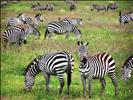
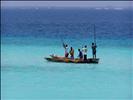
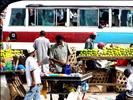
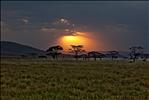


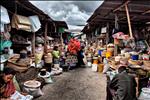
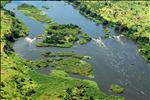
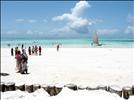






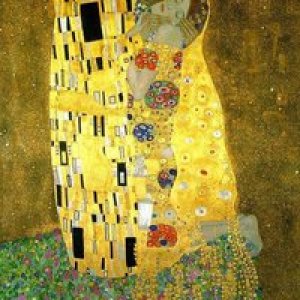





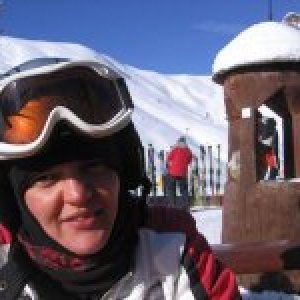


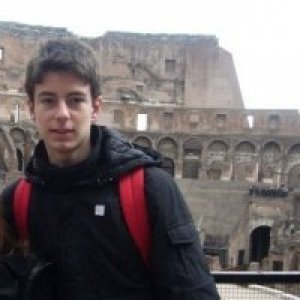








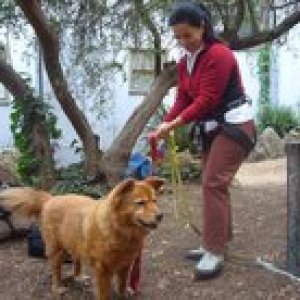
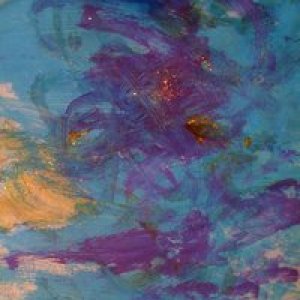
















I liked
Me and my wife volunteered in Tanzania for three months from the 25th of may 2009. We got to know Foot2Afrika through (http:/www.foot2afrika.com) and found that this organisation was the best one for us. We worked with a dental clinic in Moshi-Kilimanjaro, attending local patients and advising the doctors about western methods. We also brought some equipment as donations for the clinic. In the evenings we were helping a womens center in Shantytown with computer-training and business management. We were living at the Hostel Foot Prince (owned by same org)for the entire stay where we got breakfast and dinner that was included in the price. The projects are free of charge and you are only paying for your accommodation.We walked to and from the projects, the hostel is located in Soweto, so we could walk to most of the places. Our rooms were cleaned every other day, and there was a security-guard and other staff with the cooking and cleaning. In the weekends we went on safari and different trips to see everyday life in different parts of Moshi, also a trip to Zanzibar of course. We had a great time, and they arranged for a private room at the hostel for me and my wife so we could be comfortable. Other backpackers and volunteers were sharing rooms . We would like to recommend this organization because they were well organised and the hostel was nice and clean. Since we were living in a neighborhood, the evenings were quiet, but we also went out in the nighttime some weekends. The people in Tanzania are very friendly and helpful, even though you should bargain on everything you buy, which can be tiredsome at times, they took everything with a laugh when they realized we knew the prices. Also its an advantage to pick up some kiswahili when you're there, cause then they respect you better when you show an interest in the language. We also think it is very good that they don't charge for volunteering placements, only for food and accommodation. We also saw them on a daily basis as they came to the hostel to see how we were and if we had any problems with the placement. It was a very emotional experience at times when we saw how poor they are in some parts of town, and how their living conditions are. And we were actually shocked when we came to know volunteers from bigger organisations, when we went out in the evenings, and came to know how much they paid. We could never have afforded to experience everything we did if we had to pay that much. I loved the kids there, and the people we came to know at the clinic and the women center. Were still in touch with some of the women to see how things are going. I hope this is helpful for you, and that it is what you were looking for not spending much money while traveling and help. Regards Matt and LaurenI disliked
Nothing